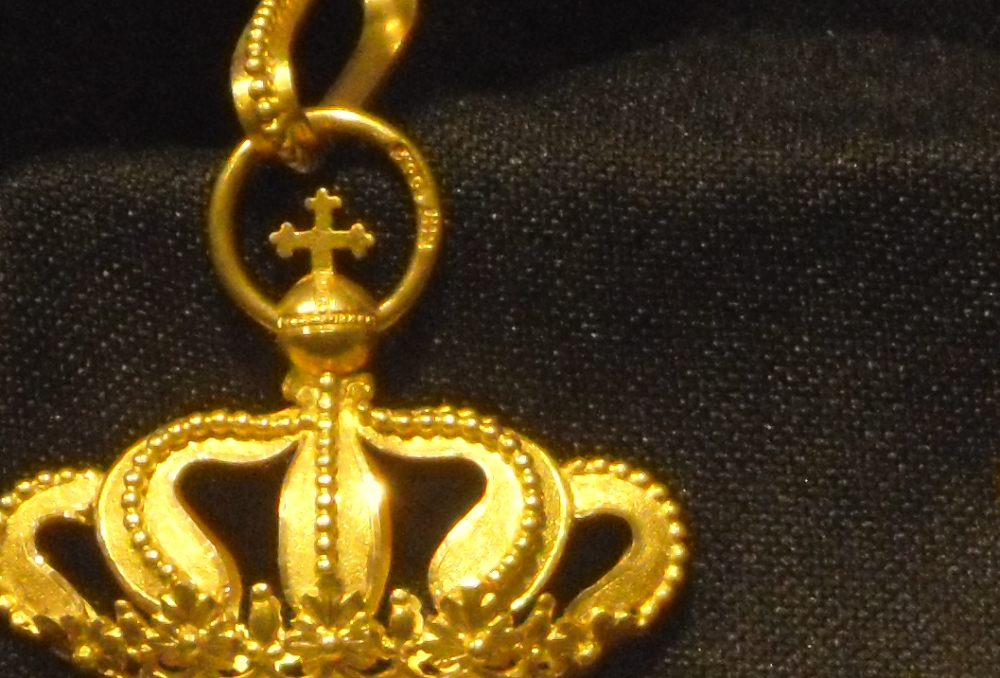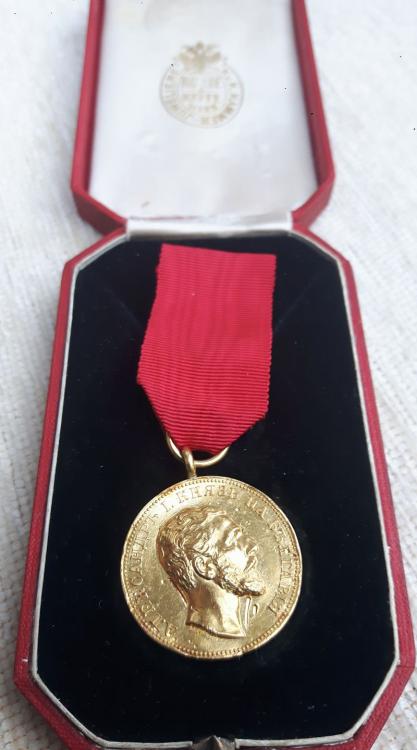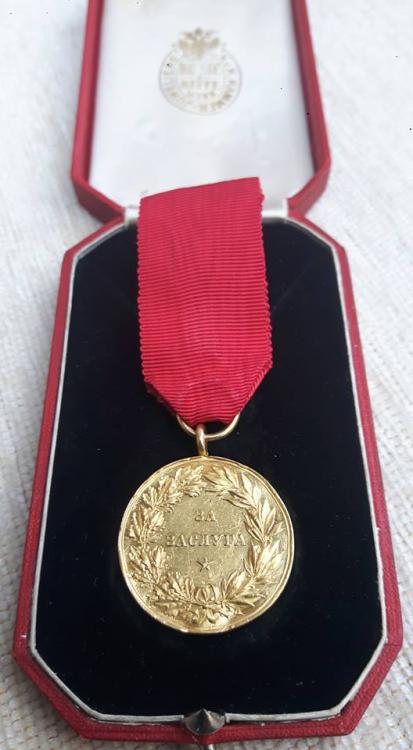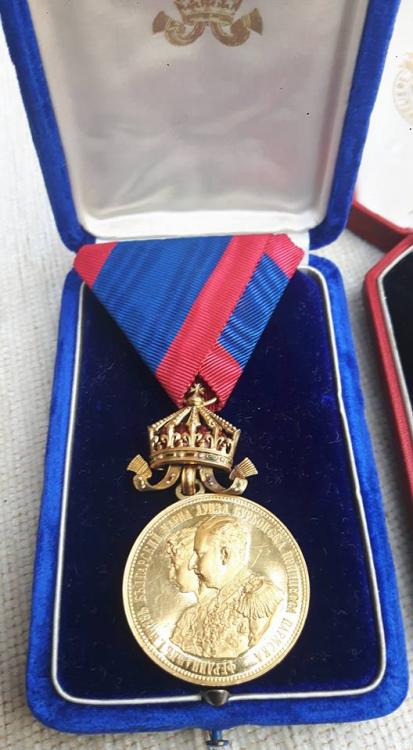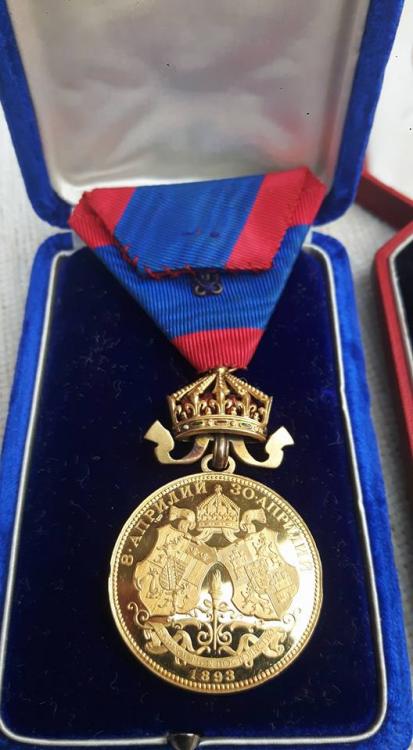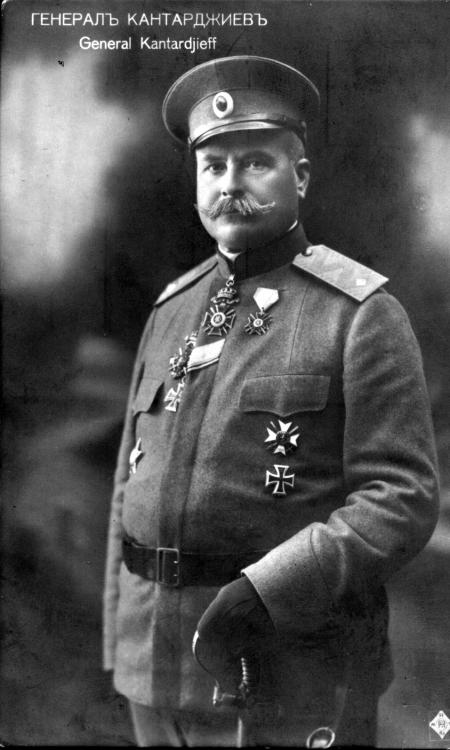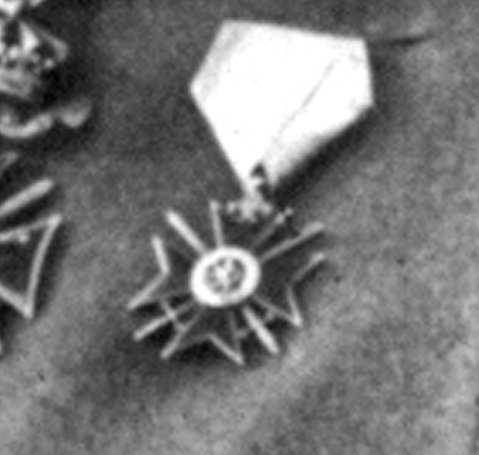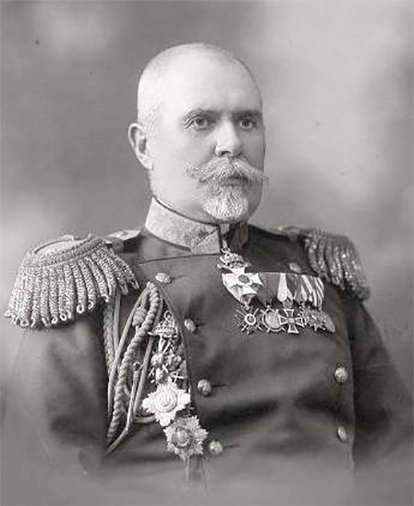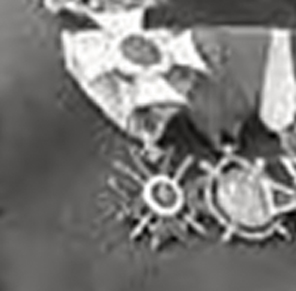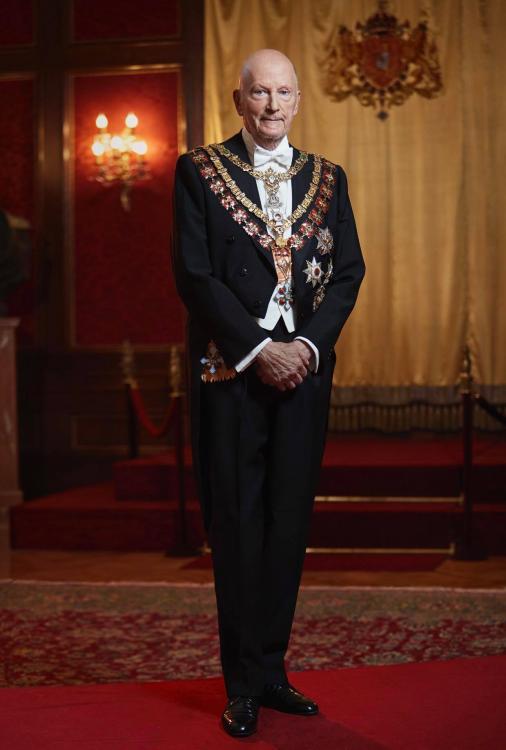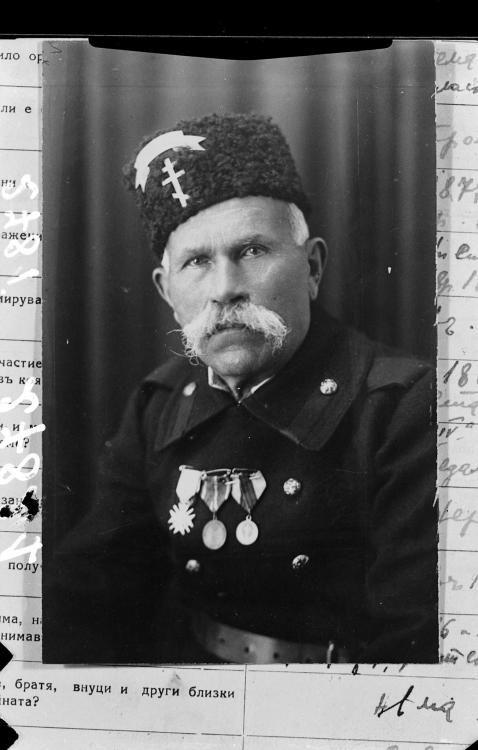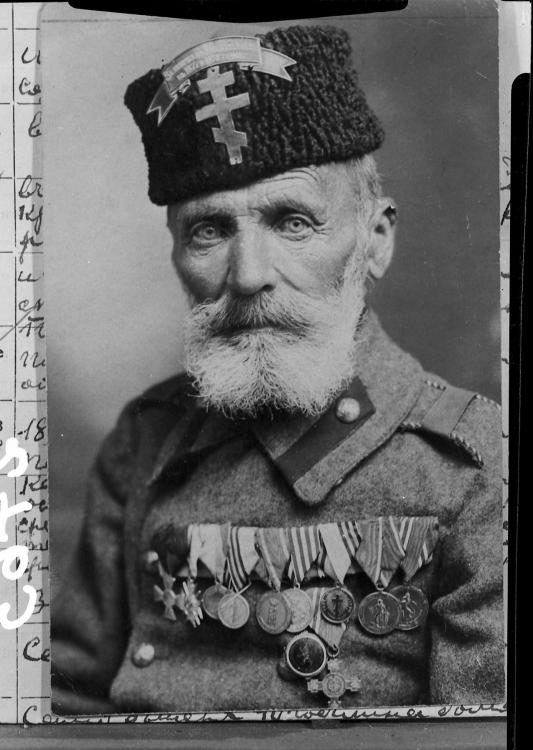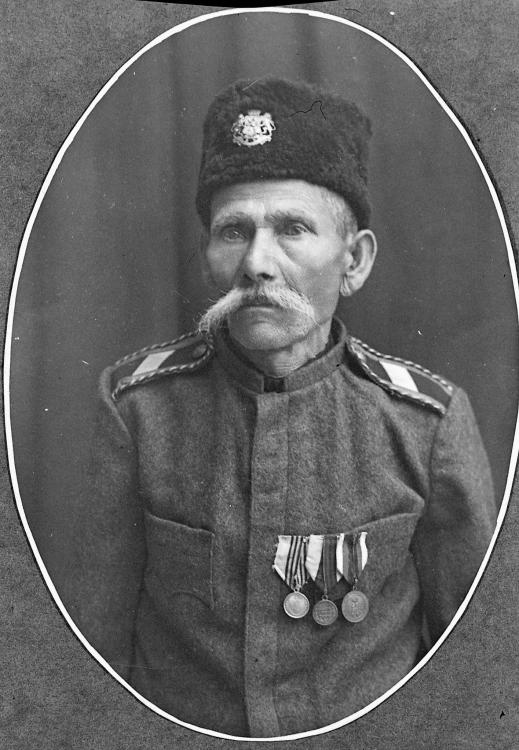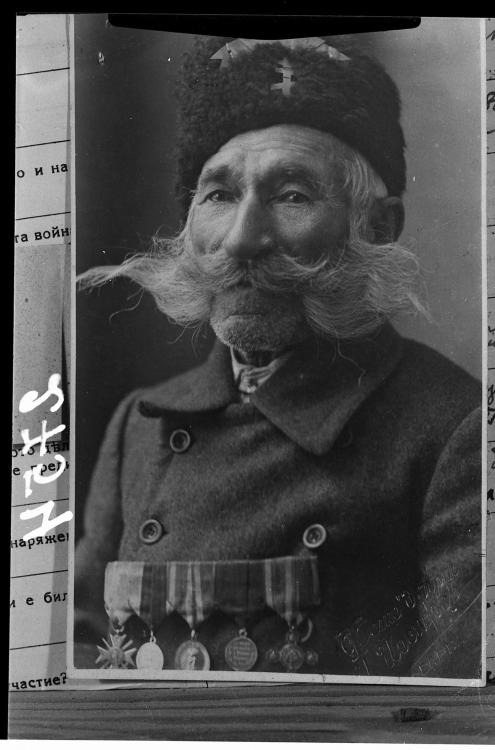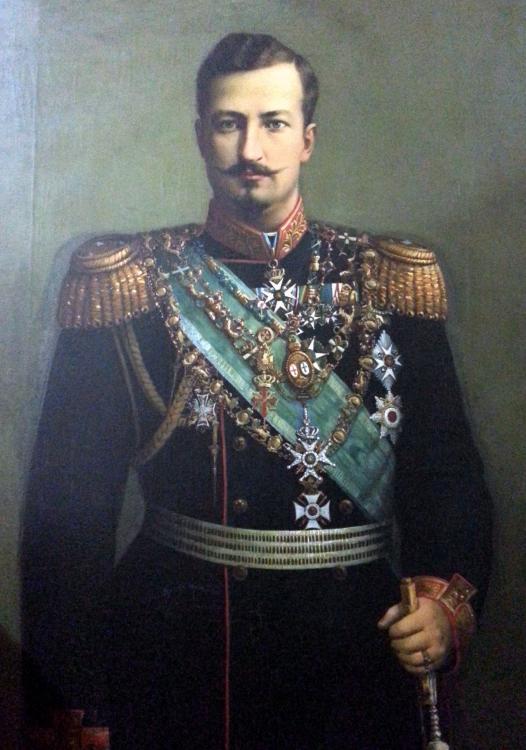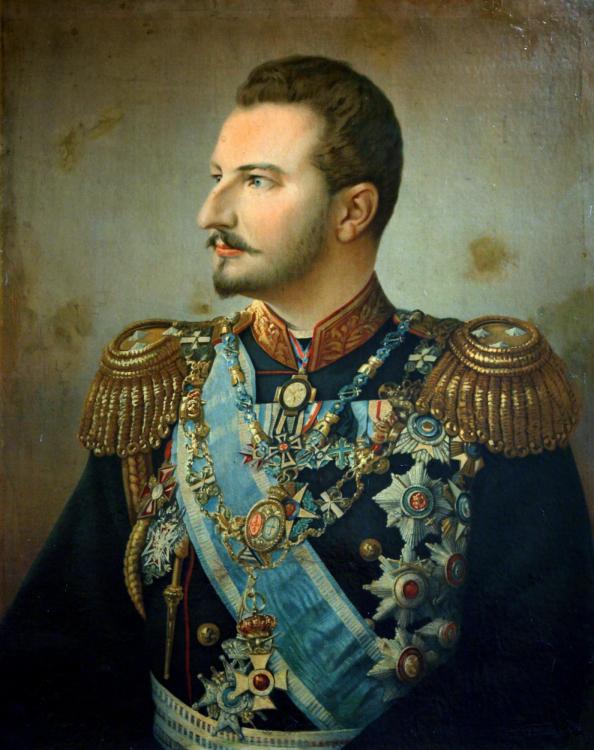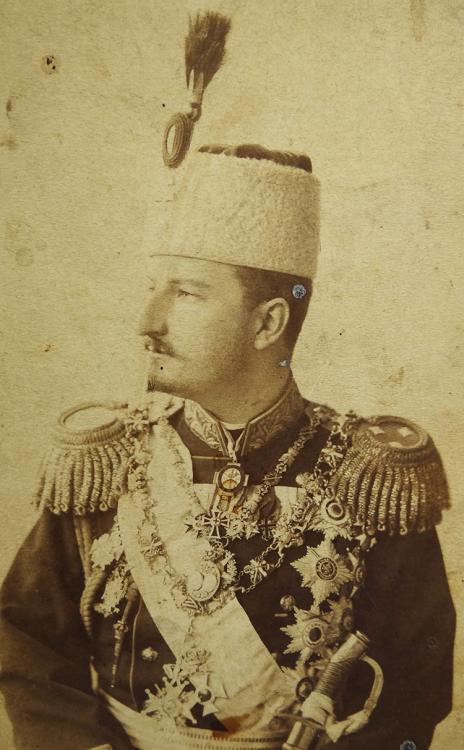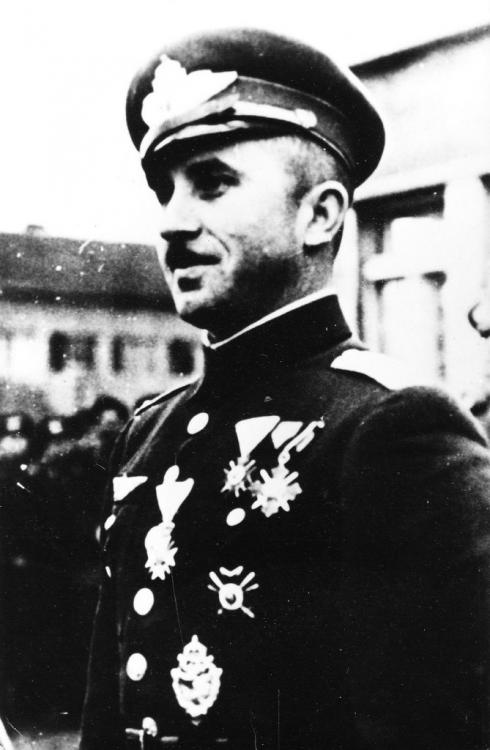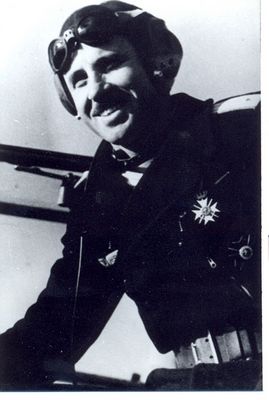-
Posts
232 -
Joined
-
Last visited
Content Type
Profiles
Forums
Blogs
Gallery
Events
Store
Everything posted by ilieff
-

Bulgarian Bravery order - early Austrian made
ilieff replied to new world's topic in Central & Eastern European States
Hi all, In line with the title of the thread, Could any of you recognise or at least determine the country of origin of the markings on Prince Battenberg's 1st Class set? I think it's Austrian mark, but could well be Imperial Russian one (or else). Thanks, PS: Provided normal image and a high-contrast version. -

Bulgarian Bravery order - early Austrian made
ilieff replied to new world's topic in Central & Eastern European States
Hi, This is [supposedly] the badge which was given to the Kaiser during WW1. It's either identical or very very similar to the badge worn by King Ferdinand himself (picture of His set is available at my website). This badge is currently stashed at the Museum of the Order of Légion d'Honneur in Paris and is own by an annonymous collector. Strangely, some sources suggest that this set was adorned with diamonds, too. By the way, have you got any idea about the fate of the other decorations which beloged to the Kaiser? I emailed the museum in Doorn a while ago but never got a response back. Has anyone been there? -

Bulgaria Medal for Merit and Order for Merit
ilieff replied to Graf's topic in Central & Eastern European States
@Yankee Thank you for the scan. It's also plausible that the images I posted and the scans you provided are of the same medal. The stiches on the ribbon are remarkably similar and also the minor scratch on the right side of the obverse (near Ferdinand's neck). The presentation box could always be a new edition. -

Bulgaria Medal for Merit and Order for Merit
ilieff replied to Graf's topic in Central & Eastern European States
Since we're on the topic of golden medals, A Bulgarian collector posted on his facebook page a couple of rare birds: Golden medal of merit from Battenberg period (SOLID GOLD, which is assumed to be the sole example known) and golden medal for the Royal wedding of 1893. Notice the enamelled crown on the latter, too. A masterpiece indeed. I haven't seen any other example of this sort. -

Bulgarian Bravery order - early Austrian made
ilieff replied to new world's topic in Central & Eastern European States
Very interesting example indeed. Well done, Vazov. Just wanted to say that the radial pattern is featured in the first [Battenberg] emissions of the order, so it's not a new thing for the order, in general. -

Bulgarian Bravery order - early Austrian made
ilieff replied to new world's topic in Central & Eastern European States
Igor, What Graf mentioned is pure [yet plausible] speculation, please don't take it literally, as most of us have been speculating in this thread lately. Being high-ranking officers would not mean that they were given special issues of orders for bravery. This is proven by the above photos and my similar research (which can actually indicate that lily crosses were being worn by ranks as low as majors). As I said before, I am prone to think that these are private issues. However, I cannot understand the logic of having brass/bronze orders with lily - I assume that if people can afford a private issue order, they'd understandably order it in solid silver instead. -

Bulgarian Bravery order - early Austrian made
ilieff replied to new world's topic in Central & Eastern European States
I think I found it. General Kantardziev appears to be wearing a 'lily' order (images 1 and 2). According to Wikipedia, he has been given the award for his deeds in the war with Serbia in 1885. Actual decoration took place after the conflict ended (perhaps in 1886). Another general - Ivan Popov is pictured under number 3 and the corresponding zoomed-in image of his order under number 4. Unfortunately, there are no better quality images out there in the internet, so I cannot be certain for either of these cases. What are your thoughts? -
Paja, Even though the award is not fully in front view on this image, I think it is Russian award instead.
-

Bulgarian Bravery order - early Austrian made
ilieff replied to new world's topic in Central & Eastern European States
I am pretty sure no.2 is featured in Pavlov's book, too. Unsure whose is that order though. Also, in Petrov's book there's [what appears to be] a silver sample with lily of the '1915' type, so that is yet another variation. -

Bulgarian Bravery order - early Austrian made
ilieff replied to new world's topic in Central & Eastern European States
Hi all, Thanks Graf, I did notice myself that the pattern looks similar and I am prone to think that these are French-made issues but unless I see a maker's marking on a 'lily' order, I'd consider it as 'to be confirmed'. I've made this comparison collage of the 'lily' IV class orders. From the images I've seen here, at museums and online, there are at least 6 variations with lilies (depending on the swords; shape of the lily, lion etc.; material used; size; notches etc. ) Quite a lot of variance out there... Ilieff -

Bulgarian Order of St Alexander
ilieff replied to camelneck's topic in Central & Eastern European States
It's probably due to the close family relations with the King, rather than any particular merits, even though that, as per the Order statute, it can be given to people with great merits to humanity, in general. It's a bit slippery when it comes to philanthropy, you know -

Website for Royal Bulgarian awards
ilieff replied to ilieff's topic in Central & Eastern European States
Hi new world, Information in this regard is present in most of the books on Bulgarian orders, including Pavlov's one (Who is actually citing Petrov). In T.Petrov's books, it is also mentioned of the 'legend' of how the 1st class 1st grade (Grand cross) was 'unintentionally' created when it was presented to Emperor Alexander II of Russia. In order to prevent any confusion, think of the 1st Class 1st Grade as 'Grand Cross'. Due to the low number of official 1st class 1st grades (I only know of 4 examples), any conclusions will be pure speculation. T.Petrov had access to the two earlier samples kept at the Military Museum in Sofia, while Prince Romanov had access to the King's collection which includes the two badges worn by King Ferdinand. Due to this fact, both authors give different measurements to the size of Grand cross badges. I, personally, consider that there are no major differences between the badges of the two grades (Stars are a different story). Of course, there are minimal variances in size, material and style but this is due to the different manufacturers, rather than intentionally set sizes and shapes. In WW1, the King has officially unified the sizes of both grades (as per Pertov again) to 61mm. However, I have no idea what's the logic behind this, as practically nobody can be awarded the 1st Grade anyway. It might be just a way to set a unified size for the 2nd Grade going forward. Thanks, -

Bulgarian Order of St Alexander
ilieff replied to camelneck's topic in Central & Eastern European States
Hi, Actually, the order sash should be worn over the left shoulder (the rest of the Bulgarian Grand cross awards are instead worn over the right shoulder). However, there are earlier images of King Simeon (as a teenager), wearing it over the right shoulder. I assume it was down to the lack of knowledge and suitable advisors at that time. As for the sash and collar combination - it is an interesting choice indeed, but not the only example (as per image below). Plus, being the grand master of the order itself, King Simeon can do as He pleases. Lastly - the breast star with swords and diamonds. That is also an interesting choice. My assumption is that there is no other suitable breast star to go with the collar, as the other diamond Alexander star is most probably used by Queen Margarita (Giovanna before her, etc). By the way, both stars can be seen on my website. -

Bulgarian Order of St Alexander
ilieff replied to camelneck's topic in Central & Eastern European States
Hi all, I wanted to share this recent photograph with you without having to open another thread, sorry for the off-topic. Official portrait of King Simeon on the occasion of His 80th jubilee. -

Bulgarian Order of St Alexander
ilieff replied to camelneck's topic in Central & Eastern European States
hi new world, I get your point. Perhaps we see it from different perspectives, hence we got to different conclusions. You said it right - the book is already 15 years old and a large portion of the information has been deemed as out-of-date. I'd like to see these mistakes corrected in the new edition (even though it cannot be purchased freely either). In terms of it being the best catalogue out there - it's only partialy true. It really depends on what you intend to use it for. If you collect generic awards, like e.g. Ferdinand/Boris Orders of Merit, then it's perfect. However, if you are interested in the earlier Battenberg awards, like Igor; the history of the system itself or, say, the Red cross badges in particular - then Pavlov's book is of little use. In essence, it's a good reference but I don't think we should overrate it, simply because it has no other 'rivals' out there. Can you please explain what do you mean by 'Pavlov's classification system'? I think I am confused. Please note, I am not undermining Pavlov's work. I admire his attempt to cataloguize the whole system of distinctions and I wish him well. -

Bulgarian Order of St Alexander
ilieff replied to camelneck's topic in Central & Eastern European States
Prof. Pavlov's book is too overrated. Its price has been high since it's launch in 2002/2003 and I am sure such high price has been artificially maintained (one way or another). Do not forget that Pavlov is a professor in Economics and [should] knows how to sell his stuff. -
I've just came across this interesting example, sold at ebay.at. At first, it appears to be a generic cross with missing ribbon. However, when I looked closer, it is a bit different. The obverse is generic - the usual horizontally positioned crowns and central medallion. However, the reverse is identical to the 'rare' model shown in Prince Romanoff's book. If my assumption is correct, then we have an example of a third type of this cross or at least a sub-type of either of the known ones. @Petar Keserdzhiev , could you please post an image of the reverse so we can compare? Thanks,
-

Bulgarian Order of St Alexander
ilieff replied to camelneck's topic in Central & Eastern European States
Thank you for the scans, Petar. Igor, information about Battenberg period awards (in general) is next to zero. I doubt that any of the current books can provide you with a detailed knowledge in this regard. -
This is a great find, Petar. As far as I know, apart from the position of the crowns, there are also visible differences in the centre of the cross. These are especially clear on the reverse. Looking at the ribbon - it looks as if someone has manually drawn the green stripe by hand (being quite wavy, washed away at the edges and not centrally aligned). Is this the case? If yes, this can suggest a later alteration. Also, I don't think this has been given to a lady (if given at all), Graf. Firstly, the 'straight' ribbons are strictly for males and secondly, as far as I know, the lady ribbons for this particular medal did not differ in width (like other Bulgarian decorations do). Have you noticed the clearly larger ring? There certainly must be a reason for it. Ilieff
-

Bulgarian Order of St Alexander
ilieff replied to camelneck's topic in Central & Eastern European States
Would it be possible for someone to post in here a couple of sample pages from this book please? I cannot decide whether it`s worth buying it, considering I am not fluent in German. -

Bulgaria First Bulgarian bravery crosses 1880
ilieff replied to Igor Ostapenko's topic in Central & Eastern European States
-

King Ferdinand I's decorations
ilieff replied to ilieff's topic in Central & Eastern European States
-

Gen. Stoyan Stoyanov's decorations
ilieff replied to ilieff's topic in Central & Eastern European States
I assume 992F meant any other decorations, beside the ones shown. -

Gen. Stoyan Stoyanov's decorations
ilieff replied to ilieff's topic in Central & Eastern European States
I can't really say with certainty but I suppose that he did not. Actually, Stoyanov (major back then) was sacked from the Air Force (without the right of a pension) following the aftermath of the Hungarian revolution in 1956. Priot to that, the State security agency was following him constantly as they suspected him of being 'not too loyal to the communist cause'. Even the code name of his file was named 'Fritz', as a hint for his good relation with the Germans during the war years. After 1956 the war hero has to work as a construction worker, then at the local thetre. Eventually, he was employed as a tourist guide (due to his good language skills) in the Rila Monastery where he actually wrote his memoirs. @new world Thank you for the link. More interesting things about his decorations. The media in Bulgarian inaccurately portraits him as having earned all classes of the Military order. He has been given the Order of Military merit V class but for some reason this decoration was not displayed at his funeral. I assume that Stoyanov has tried to remove all the 'unsuitable' royal awards back in the day, as we can't see crowns on either of them. This is the case with the 3rd class, which clearly has been given to him with crown (once). And if you wonder why he wore the commemorative medal for the Balkan wars with black stripe in the middle - that's because of his father who died 5 months prior to Stoyanov's birth. -

King Ferdinand I's decorations
ilieff replied to ilieff's topic in Central & Eastern European States
Hi new world, As the theory goes, since the inception of the Third Kingdom, the Bulgarian Monarch is automatically allocated both 1st and 4th Classes of the Military Order. I am not too sure what's the reason behind it, but I assume it might be just another feature which has been copied over from St.George's Order. An interesting example of this rule is the fact that Prince Alexander I, during His state visit in Russia, displays the 1st Class of the sole (at that time) Bulgarian order, utilising His position as head of state. Only months later he is officially recognised for His deeds in the Russo-Turkish war (1877-1878) and awarded the 1st class, this time for His merits and not for the position he is currently occupying. It is funny though, as I am thinking The Prince would have had to present the order to Himself. Perhaps he used a mirror. Next in line, Ferdinand I is often seen (especially in the earlier period of His reign) displaying both the neck order and the 4th class on His chest. It's highly possible that he used several badges and not just one, as is the case with His 1st class badges. He used His position as Monarch to display the Military order, so it might be slightly different to the general rule which applies to generic decorations we all are familiar with. By the way, the heir to the throne (in this case Boris of Tarnovo) has been given an officer rank since His birth, as some suggest, just to be eligible to be decorated with the 4th Class of the Order "For Bravery". There are several photos of Him as child having the badge on His chest. Surely he could not have possibly earned it on the battlefield at this age. And later, as King Boris III, He was never seen wearing 1st class, nor Grand cross. He only displayed the 4th class which He has by right and the two grades of the 3rd class He was presented with during the Balkan and Great wars.


